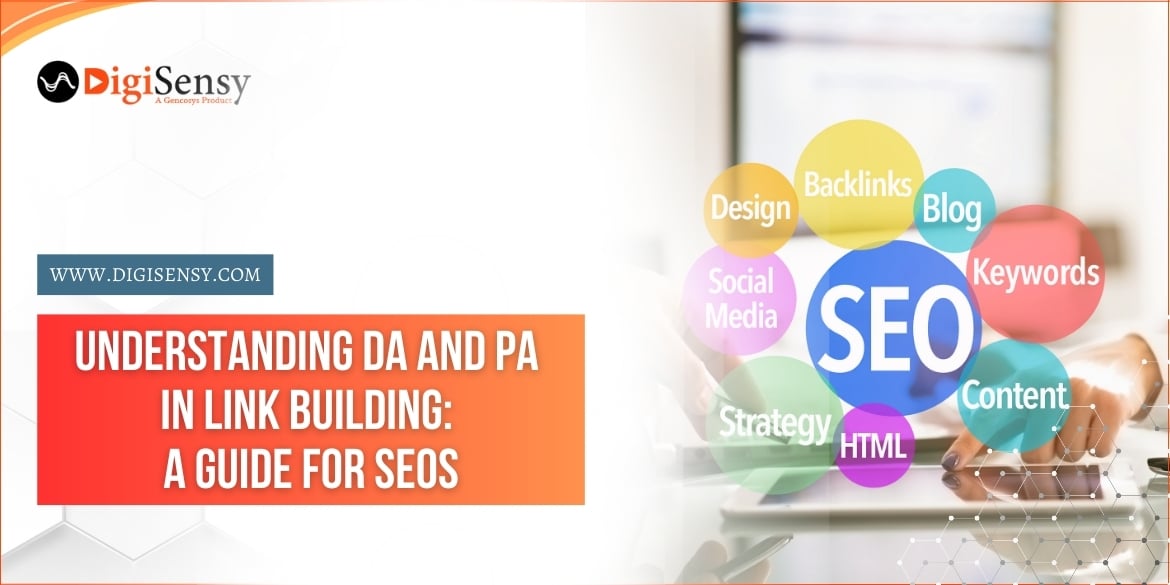When one begins to delve into the world of SEO, some terms that are going to be heard often are Domain Authority (DA) and Page Authority (PA). Link Builders rely heavily on these two metrics for determining the overall strength of a website or a page and hence its ability to rank on search engine result pages (SERPs). In this blog post, we would like to shed some light on DA and PA and see where they relate and how they may be used for successful link building.
What Do DA and PA Mean?
Domain Authority and Page Authority are proprietary metrics created by Moz, an established SEO company. These metrics are there to assist SEOs in determining the ranking ability of a domain or a page in search engine result pages.
- Domain Authority (DA): This score is predicted between 0 and 100 of how much a domain is likely to rank on search engines. Several factors are taken into account, such as the number of backlinks toward that domain, the prominence of the link quality, and the domain profile overall link.
- Page Authority (PA): Page Authority reflects the ranking potential of an individual page, and that potential is measured by the link profile surrounding it. Page Authority, like Domain Authority, is a continuous score that ranges from 0 to 100.
Both Domain Authority and Page Authority are determined by machine-learning algorithms and are not direct ranking factors used by search engines such as Google. They are simply tools to help the SEO analyze and forecast the performance of a particular page or domain.
How do DA & PA Calculate?
Moz considers several things to determine the DA and PA, such as:
- Link Profile: The quantity and quality of external backlinks to the domain and/or page. Therefore, links from authoritative websites relevant to the domain improve DA and PA.
- Quality of Content: It’s typical to have high DA and PA because of the quality of informative and engaging content.
- Moz Index for Links: A very wide index created by Moz to calculate the strength for any domain or page. Technically, it has very high backlinks in the Moz index, and DA and PA metrics become more accurate with the indexes.
- External Factors: It may also take into account other factors, such as mentions on social media or user engagement that will indirectly alter DA and PA.
Essentially, since DA and PA can always be interpreted in relative terms, a comparison with other domains or pages in the same niche/industry yields the best performance measurement. A higher DA or PA is better; however, these numbers make more sense when used in the comparison of relative performance.
Why Is It Important in Link Building That DA and PA Be Met?
Link building is probably the most traditional aspect of SEO today. When you get links from other websites linking to yours, you are getting “votes of confidence” in telling search engines that your material is worthy or trustworthy. Both DA and PA metrics are indicative of how high the quality of an opportunity for link building is. Here’s why:
- Identify Link Building Opportunities with High-Quality Sites
DA and PA help you find which websites or pages are going to pass valuable link equity. Try to get links from high DA or PA pages; such sites tend to contribute to your rank, too, because they pass quote value to you.
- Enhanced Accuracy in Link Targeting
Know which pages have high PA on a website so that you can target link building to those pages to maximize the benefit from your links.
- Evaluation of Link Building Success
If DA and PA are rising after getting some good-quality backlinks over time, then it is enough evidence to make you confident regarding the success of your link-building strategy.
- Competitive Benchmarking
DA and PA can also demonstrate a high efficacy in the analysis of competitors. The moment an analysis reveals that DA is higher than yours, it means that you compete with a stronger backlink profile, and you need to get yours built up to beat them in competition.
How to Improve DA and PA?
While you may not exercise direct influence upon DA and PA, several measures can be taken to improve them indirectly over some time:
- Quality Content: High-quality content, which is also interesting and useful, will attract natural backlinks to enhance DA and PA alike.
- High-Quality Backlinks: These are backlinks from authoritative and relevant websites in the same field or industry. High-quality links are worth more than giant heaps of links of dubious quality. Good avenues of finding these opportunities include guest posting on reputable websites, collaboration on link roundups, broken link building, and joint ventures.
- Fixing Broken Links: Every broken link on the website should be replaced with a valid link. Broken links harm your PA and DA, and keeping an occasional check on your link health is paramount.
- On-Page SEO Optimization: Ensure that your web pages are well optimized for search engines. Maximum on-page SEO, including optimizing title tags, headers, and content structure, is the way to lift PA.
- Remove Toxic Backlinks: Remove backlinks coming from low-quality or spammy websites, as they may hurt your DA and PA.
Conclusion:
Domain Authority and Page Authority are not ranking factors used by Google; still, they are among the most useful metrics for any SEO in assessing a website’s or a page’s strength and potential. If you put more effort into building quality backlinks, writing credible content, and continuously improving your SEO, both your DA and PA will grow.
Link-building remains a great way to improve your website ranking on search engines, and understanding DA and PA positions you better in choosing link-building initiatives. You will better the overall SEO performance of your website with these metrics in mind, targeting high-authority domains/pages.
At DigiSensy, we emphasize that a well-planned link-building strategy determines success in SEO. Are you eager to step up your link-building plan even more? Speak to us today for competent advice to improve your website’s DA, PA, and general online presence.




